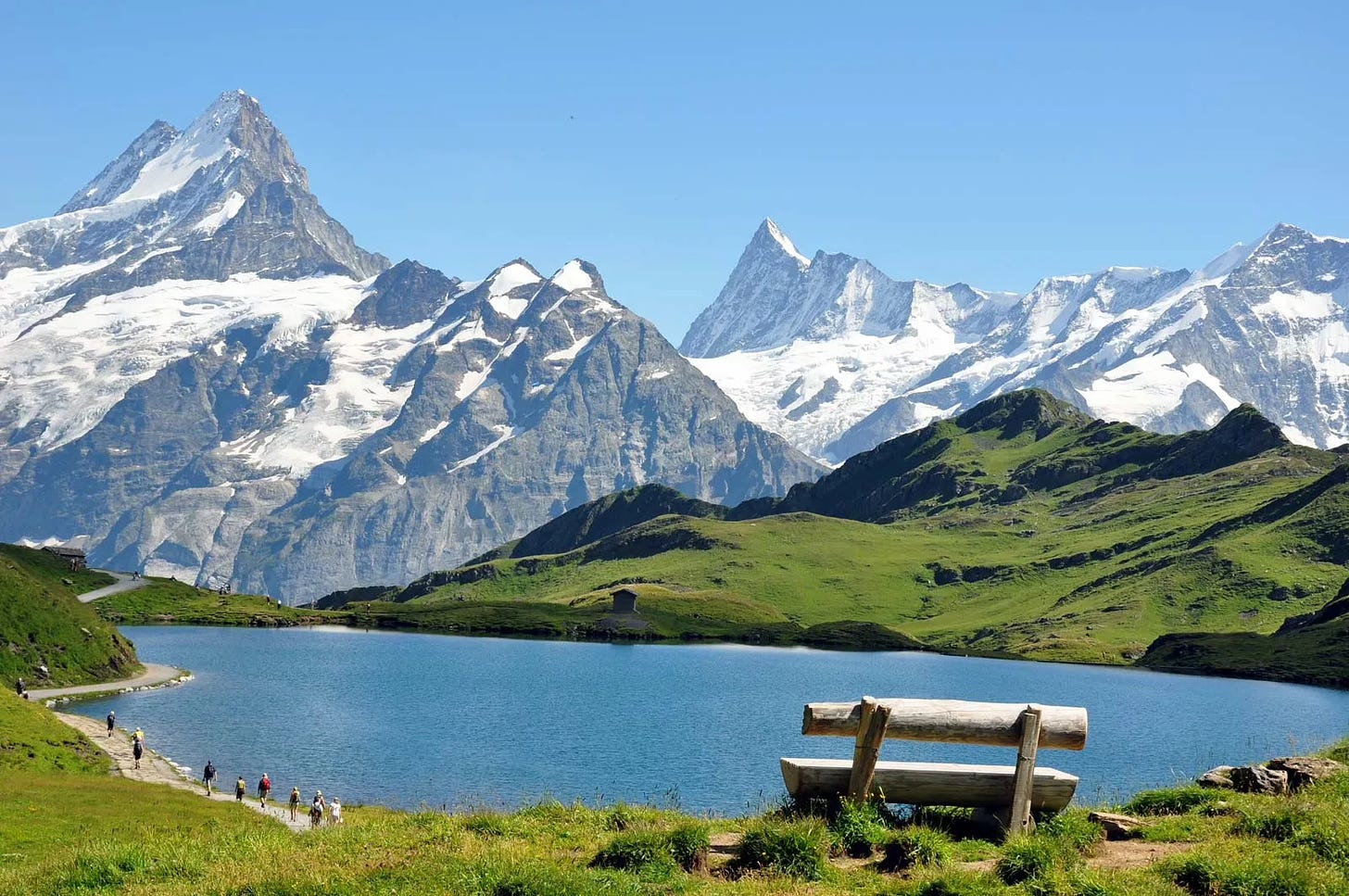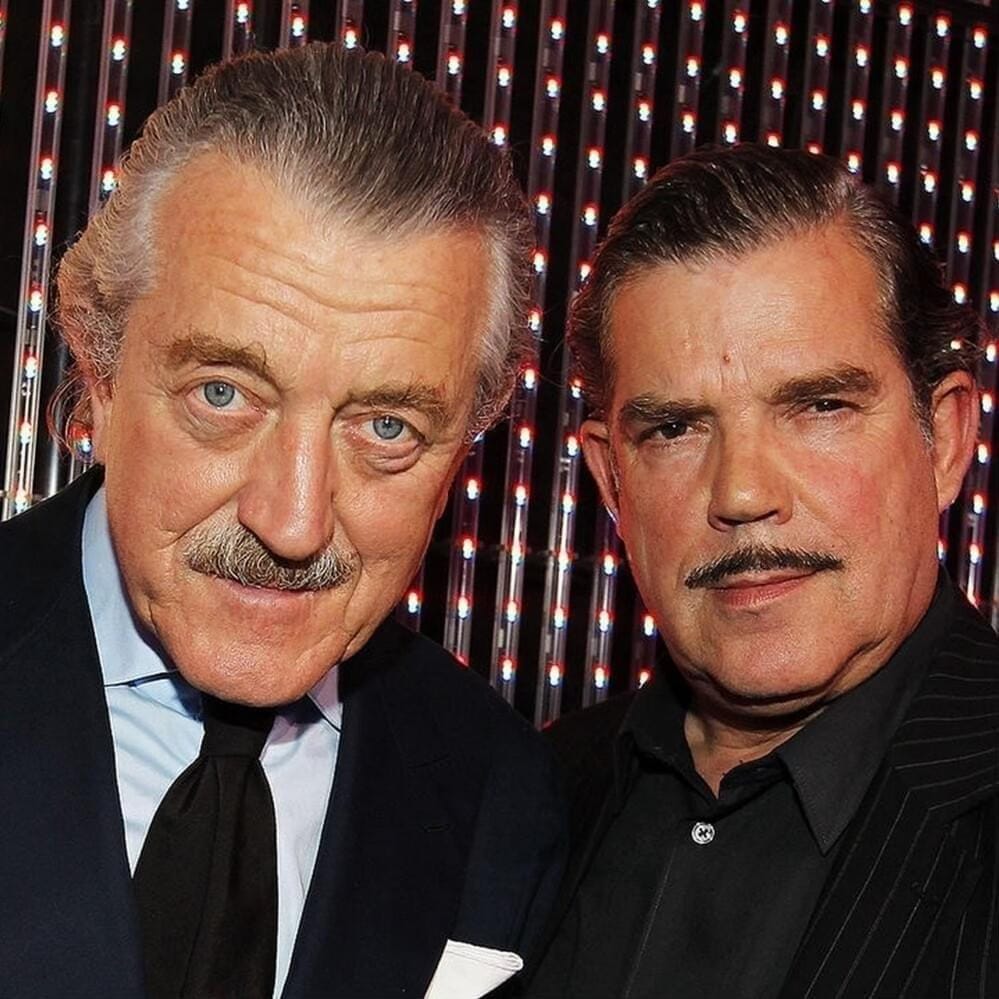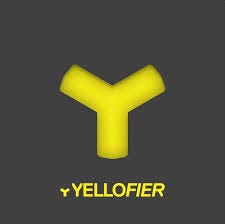Yello and the Swiss Sound Revolution: How Two Sound Hunters and a Gambler Redefined Electronic Music
The Twelve Inch 139 : I Love You (Yello)
Switzerland: A Land of Watches, Knives, and… Electronic Beats?
When most people think of Switzerland, images of snow-capped mountains, luxury watches, and impeccable design come to mind. Switzerland is known for influential architects like Le Corbusier, the iconic Helvetica typeface, and multi-functional Swiss Army knives. And yet, despite its association with precision engineering and rich chocolates, Switzerland isn't often linked to the rock, pop, or electronic music scenes or music in general. But, surprisingly, Switzerland boasts both the Montreux Jazz Festival and the first ever and most recent victory in the Eurovision Song Contest—And we all remember Céline Dion’s breakthrough performance, winning the edition of 1988 and kickstarting her stellar career
One Swiss act stands out as a pioneering force in electronic music: Yello. Formed in Zurich in 1979, Yello paved a new path in sound production and helped shape the electronic music landscape with their experimental approach. Today, we dive into their story, exploring how they crafted their first major hit, “I Love You,” and left an indelible mark on the world of music.
FunFact 1 : Yello rarely incorporates samples from existing music. Instead, nearly every instrument is meticulously sampled and re-engineered by Boris Blank, who has created an extensive, original library of thousands of uniquely named and categorized sounds over the years.
The Beginnings of Yello: Sound Hunting in Swiss Junkyards
Yello's unique sound was born out of unlikely origins. Founding members Boris Blank and Carlos Perón met in an unconventional way: through a mutual acquaintance—a hash dealer. However, their partnership blossomed not over music itself, but over a shared fascination with sound. Both were "sound collectors," often capturing raw noises from their surroundings. One of their first collaborations occurred in a junkyard, where they brought recording equipment to capture the gritty, mechanical sounds of crushing cars. At the time, this approach was highly innovative; without modern sampling equipment, they had to rely on portable cassette recorders to gather and layer sounds.
Boris Blank, the driving force behind Yello’s sonic creativity, famously said, “I’m more a mood maker than a musician.”With no formal music training, he painted audio landscapes much like a painter would work on a canvas, meticulously arranging sounds until they created an evocative “patchwork” of moods and textures. Using his two-track Revox A77 recorder, Blank achieved what we might now call “manual sequencing,” looping his unique samples to form rhythm tracks.
Welcome, I’m Pe Dupre and this is “The Twelve Inch”, a newsletter that tells the history of dance music between 1975 and 1995, one twelve inch at a time.
If you’ve received this newsletter, then you either subscribed or someone forwarded it to you. If you fit into the latter and want to subscribe, please do so. That way you will not miss a single episode.
Influences from Abroad: A Trip to San Francisco
In 1977 (so before Yello), Blank and Perón traveled to San Francisco, hoping to connect with their musical inspirations—the American avant-garde bands The Residents and Tuxedomoon. They took a bold step, delivering homemade cassettes to Ralph Records, the label associated with these bands. It was during this trip that they discovered a burgeoning “industrial techno sound,” which resonated with their own creative pursuits and spurred their confidence in the commercial potential of their music. To their surprise, a letter from Ralph Records arrived soon after, expressing interest in the duo's experimental sounds.
Enter Dieter Meier: The Millionaire Gambler with a Vision
Back in Zurich, a fateful encounter in a record store introduced Blank and Perón to Dieter Meier, a man whose profile was as eclectic as Yello’s sound. Meier, a conceptual artist, millionaire, and gambler, had no musical experience, yet he saw potential in the duo’s eccentric sound. He quickly joined the group, and Yello was officially born. Meier’s unconventional expression “a yelled hello” became their band’s name: Yello.
Yello’s debut album, “Solid Pleasure,” was released in 1980 under Ralph Records, featuring deliberately jarring cover art designed to stand out. The album’s “new wave” and “electro” sound fit perfectly with the evolving electronic music scene, and its most popular track, “Bostich,” introduced the world to Yello’s sound. The song’s punchy staccato vocals and intense rhythm intrigued American listeners, who initially thought the band might be Black rappers—a testament to their unexpected global appeal.
Funfact 2 : On March 23, 1994, between 3 PM and 4 PM, Dieter Meier stood on a cast-iron plaque at Bahnhofplatz in Kassel. This plaque had been installed 22 years earlier as Meier’s contribution to Documenta 5. On it, he had declared that he would return to the same spot 22 years later—and true to his word, that’s precisely what he did.
From Visuals to Videos: Yello’s Cinematic Style
Yello’s second album, “Claro Que Sí,” marked their first foray into music videos, blending music and visuals in a uniquely cinematic way. The video for “The Evening’s Young” incorporated bold, humorous elements inspired by experimental films and thriller influences, while “Pinball Cha” was shot in Zurich’s Museum of Modern Art, embracing vibrant, jittery visuals that matched the band’s style.
In 1983, following the release of Yello’s third album, “You Gotta Say Yes to Another Excess,” Perón left to pursue a solo career and composed the soundtrack for the film "Die Schwarze Spinne". With Blank and Meier remaining, Yello solidified into a duo with a clear division of roles: Blank focused on the sounds and music, while Meier took on the vocals and conceptual vision. Meier later reflected on the split, saying, “It came to a point when Boris didn’t want to work anymore with Carlos” “Even when they were together the contribution of Carlos was minimal”. Carlos sees it quite differently as a difference of idea of future direction. Carlos wanted to do live shows and cooperate with other artists. Dieter & Boris didn’t want to. Apart from the recent show in Hamburg Yello ever once appeared live for 15 minutes in the NYC Roxy in 1983. They did 1 long song that was released on a 12 inch afterwards.
who’s the odd one out ?
The key track of “Die Schwarze Spinne” soundtrack that would become a staple in every New Beat set during the late eighties
The Twelve-Inch Release of “I Love You”: Yello’s Cinematic Hit
From “You Gotta Say Yes to Another Excess,” the track “I Love You” captured listeners with its complex layers and atmospheric intensity. With sound effects like screeching tires and pulsating rhythms, the track painted a vivid mental image, allowing listeners to immerse themselves in Yello’s surreal world. The song’s lyrics hinted at themes of danger and forbidden love, with phrases like “I need it to ride in your car” and “You’re going too far” adding a hint of thrill.
“I Love You” became Yello’s first European top 10 hit, popularizing their unique visual approach even before the rise of MTV. Although originally released as a seven-minute twelve-inch version, later editions to a 5.14 minute extended. In 1988 a (slower) remix by Emilio Pasquez (who was partly responsible for “Theme From S-Express) was released.
Funfact 3 : Dieter Meier’s ventures beyond Yello are nothing short of extraordinary. He wears many hats: winemaker and organic beef producer (owning a vineyard and cattle ranch in Argentina, known for its exquisite malbec-cabernet sauvignon-cabernet franc blend), restaurateur, actor, film director, former professional gambler, acclaimed performance artist, author, photographer, and designer of watches, silk scarves, and sports cars. He’s also a former top Swiss golfer (though that claim is a bit tricky to verify) and was instrumental in developing “the first fully digital mixing console for music and film.”
Yello’s Success: A Mix of Coincidence and Creative Freedom
When asked about Yello’s success, especially given Switzerland’s conservative reputation, Meier remarked, ““We are very provincial, insofar we are not trying to copy rock’n’roll. These are not our musical roots”. Yello wasn’t really aiming for global pop success. They weren’t trying to fit in with any scene, they just did what they wanted to do. As Meier put it, “There are a lot of coincidences that made Yello a successful band.”
By embracing spontaneity and unconventional methods, Yello set themselves apart in the music industry, proving that staying true to one’s artistic vision can foster long-lasting impact.
Legacy and Reinvention: Yello’s Influence on Electronic Music
Despite the evolving music industry, Yello has maintained a career spanning four decades—a testament to their innovation and adaptability. The secret to their longevity lies in a relentless drive to push creative boundaries. While Blank continuously crafted groundbreaking sounds, Meier infused Yello’s music with surreal and humorous themes, balancing the music’s intensity with levity.
In the end, Yello’s contribution to electronic music wasn’t just about pioneering sound; it was about creating a genre-defying experience that inspired generations of musicians and fans. Yello didn’t just follow trends—they created them.
Funfact 4 : The sampler-based approach to music creation is now available as an app: Yellofier, developed by Boris Blank and exclusively available on iOS. The app lets you craft unique music using your own sounds as well as a collection of sounds curated by Boris Blank himself.
Call to Action: Rediscover Yello and Join the Journey
What was the first Yello Song you came into contact with ? Wad it “Bostich”, “Oh Yeah” or, like me, “I Love You”? What’s your favorite Yello song? I love to hear from you so join the conversation.
Further reading (or should I say watching)
There are a number of interesting video’s/links :
So You Wanna Hear More ?
I thought you would !
It’s fun to write about music but let’s be honest. Music is made to listen to.
Every week, together with this newsletter, I release a 1 hour beatmix on Mixcloud and Soundcloud. I start with the discussed twelve inch and follow up with 10/15 songs from the same timeframe/genre. The ideal soundtrack for…. Well whatever you like to do when you listen to dance music.
So what’s in this week’s mix ?
Yello might have been an outlier in 1983, but that doesn't mean electronic music was scarce in Europe at the time.
This was the era when synthpop was surging in popularity across the UK, with its influence rippling throughout the rest of Europe. Major acts like Depeche Mode, Visage, Duran Duran, and The Human League were at the forefront of the scene.
Meanwhile, in Italy, where disco never truly faded, a new wave of 1980s disco emerged—what we now know as Italo disco. Artists like Scotch, Mike Mareen, and Stargo brought this fresh sound to life (good luck unraveling the meaning behind that Stargo track!).
A perfect deep dive into one of my favorite years in music !
Enjoy !
Next week, we’ll explore the fascinating journey of an ’80s MTV star who spent 11 years studying ballet, mastered flamenco dancing, and began her career as an elephant rider in a circus.














They are responsible for one of my favourite records of all time. Despite that I knew little about them until now. The Rhythm Divine written by Bill Mackenzie for Shirley Basset is extraordinary. Billy's version even more so. It's my most treasured vinyl record.
Billy said "Working with her made everything valid with my mum and aunties."
Good read thanks!
When I was 15 my Mum went to see her friend in Uganda for a month. She left me at home with £150, a cupboard full of Pot Noodles and strict instructions to feed the cat.
Within 24 hours I'd been to the Virgin Megastore in Birmingham and spent the bulk of the £150 on records, the rest I spent on shit lager and Cinzano (?!) and takeaways the first weekend when my friend Craig came over. We got absolutely battered, ran riot and listened to loads of records at top volume and both puked absolutely everywhere overnight (I still have photos I took 😆😁)
One of the records I bought was Yello - The New Mix In One Go 1980 - 1985 double album. It was pretty pricey being a double and I didn't really get into at first. In the days that followed trying to eek out supplies and survive on Vesta Curries I really resented it. Then I began to love it. It's probably a record I've listened to more than just about any other over the years and still have it.
The production still astonishes me!